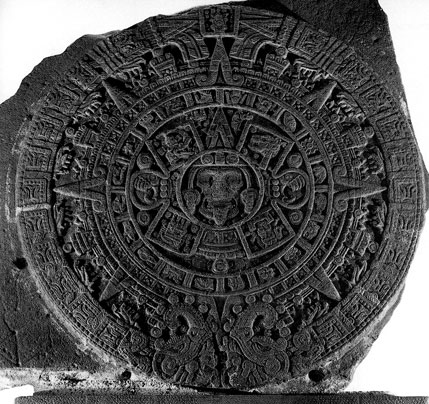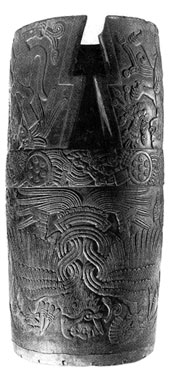
Above: The Aztec Sun Stone, found beneath the central plaza of Mexico City in the last decade of the 18th century, and now the cental exhibit of the Aztec hall in the National Museum of Anthropology. Carved at its centre is the face of the sun. The monument is not a fully functioning calendar, but commemorates the five mythic world-creations ("suns"). The date-glyph cartouche 13 reed at the top denotes the mythical beginning of the present sun, but also marks the calendrical year 1427, when Itzcóatl rose to power.
… the persistent rolling of drums – UTV, 149.
Left: The word 'pariah' derives from Tamil paraiyan, and is cognate to both "untouchable" and "drummer". Lowry was aware (from Prescott and Spence) of the Aztec huehue, the large sacred drum in the temple of Huitzilopotchli, sounded at moments of danger or sacrifice. The Consul's complex mental guilt has the effect of designating himself (to himself) as a conquistador figure, one destined to pay the sacrificial price of his exploitation. The picture depicts a wooden drum (panhuehuetl) from Malinalco, carved with eagles and jaguars dancing and uttering the cry for war. Image from Townsend, The Aztecs, p.201.
